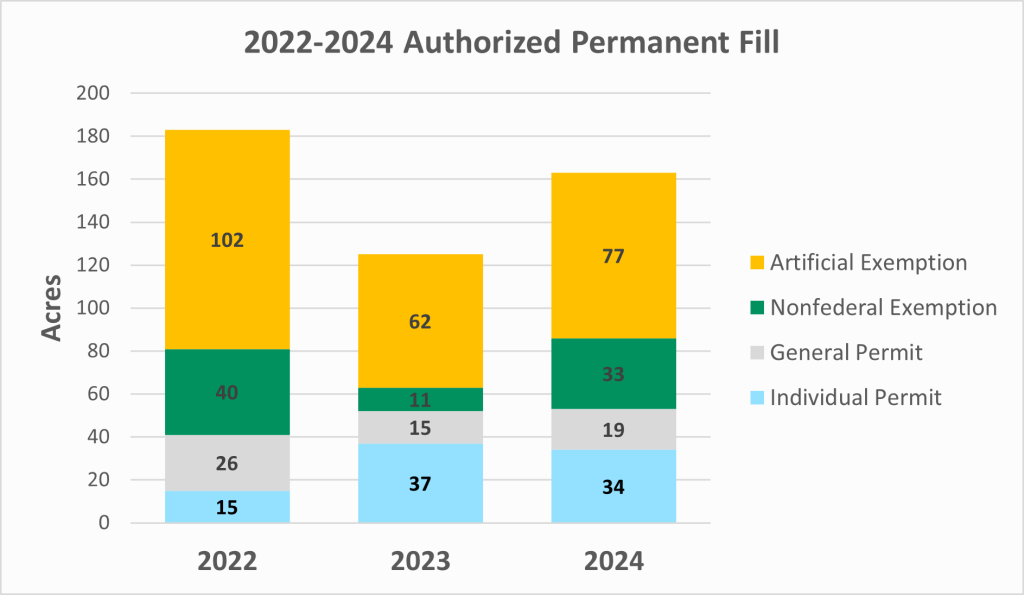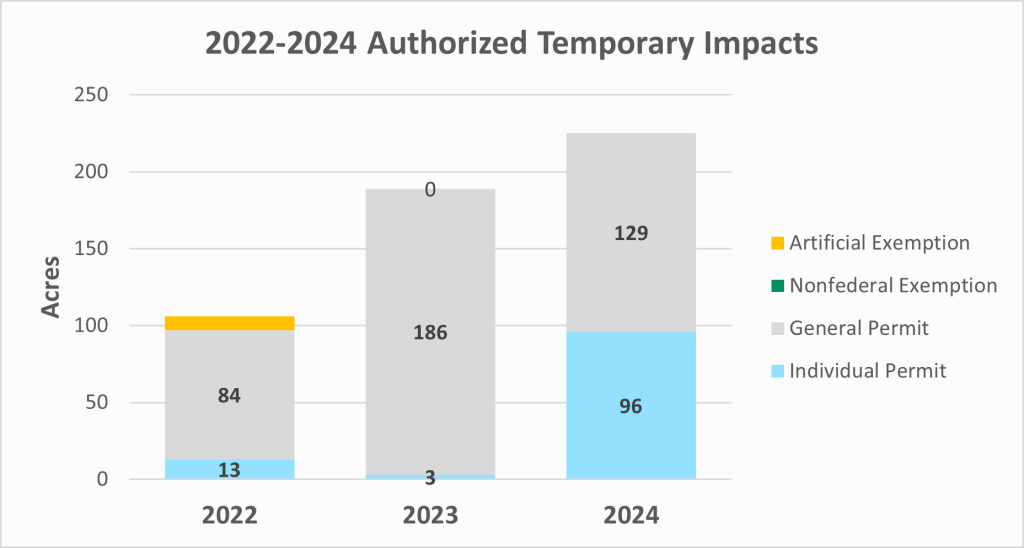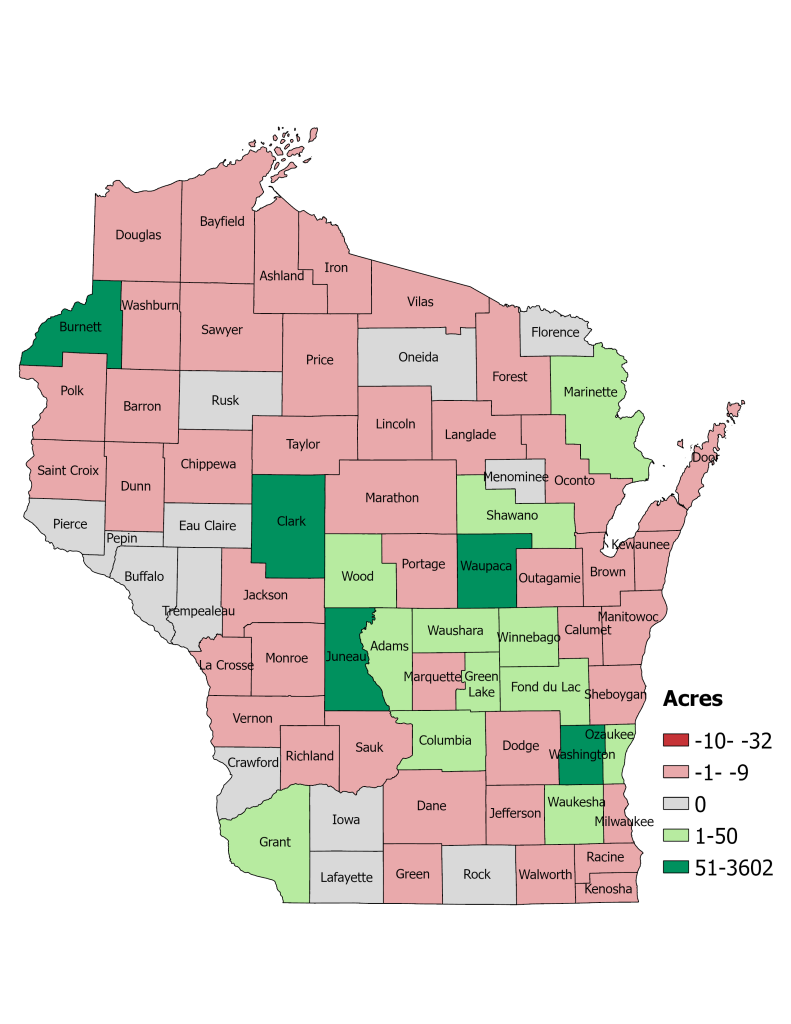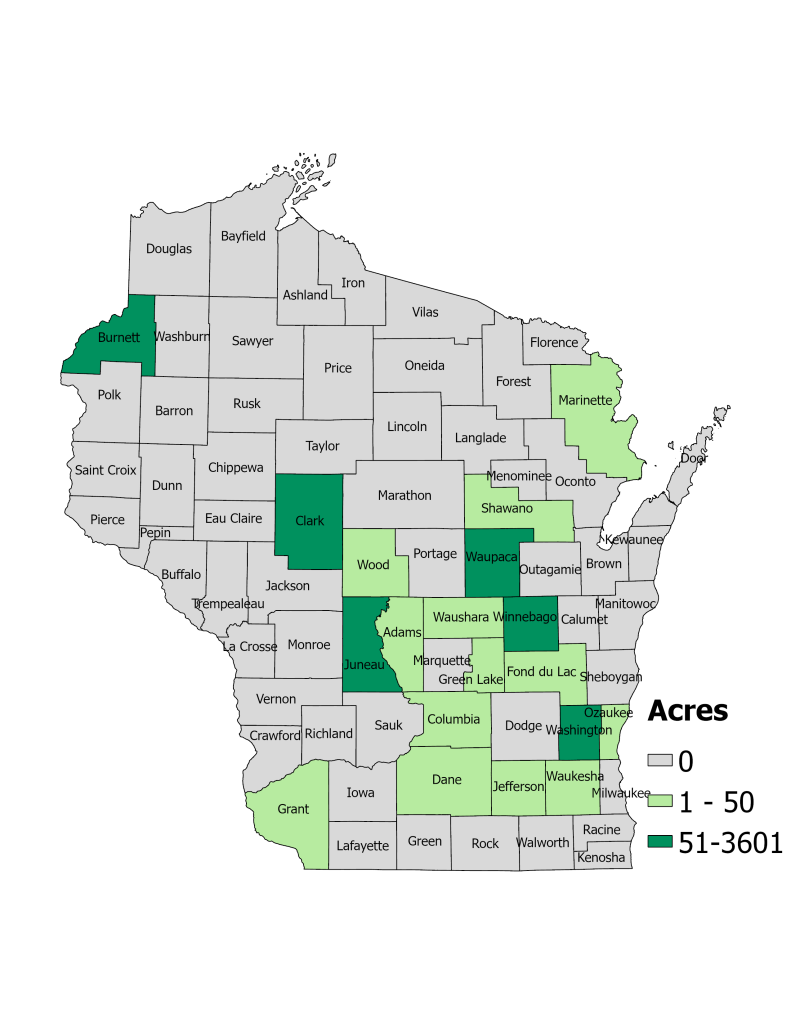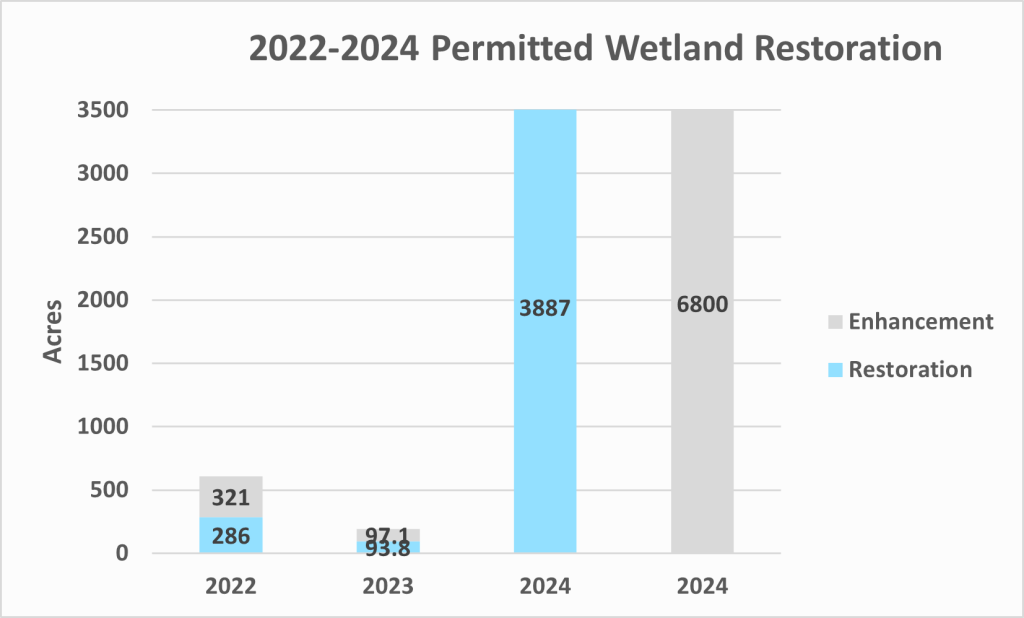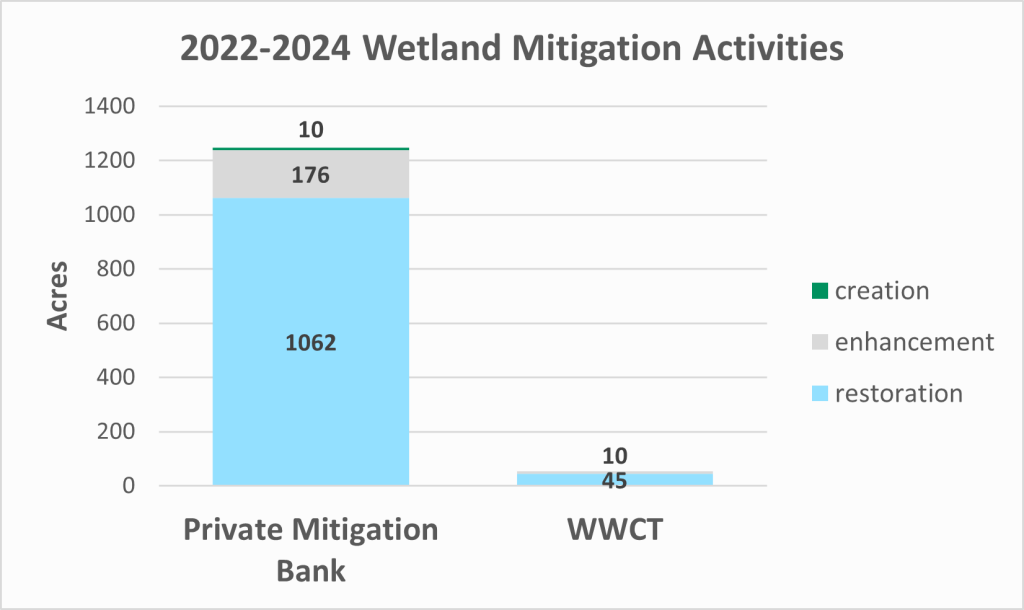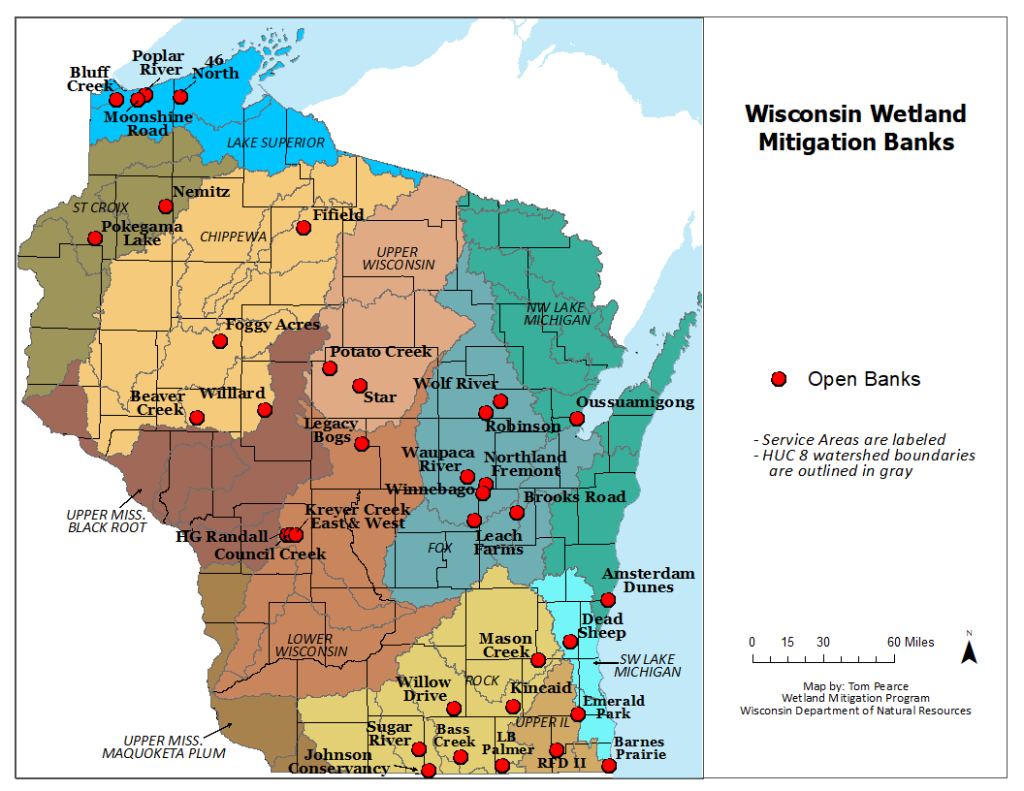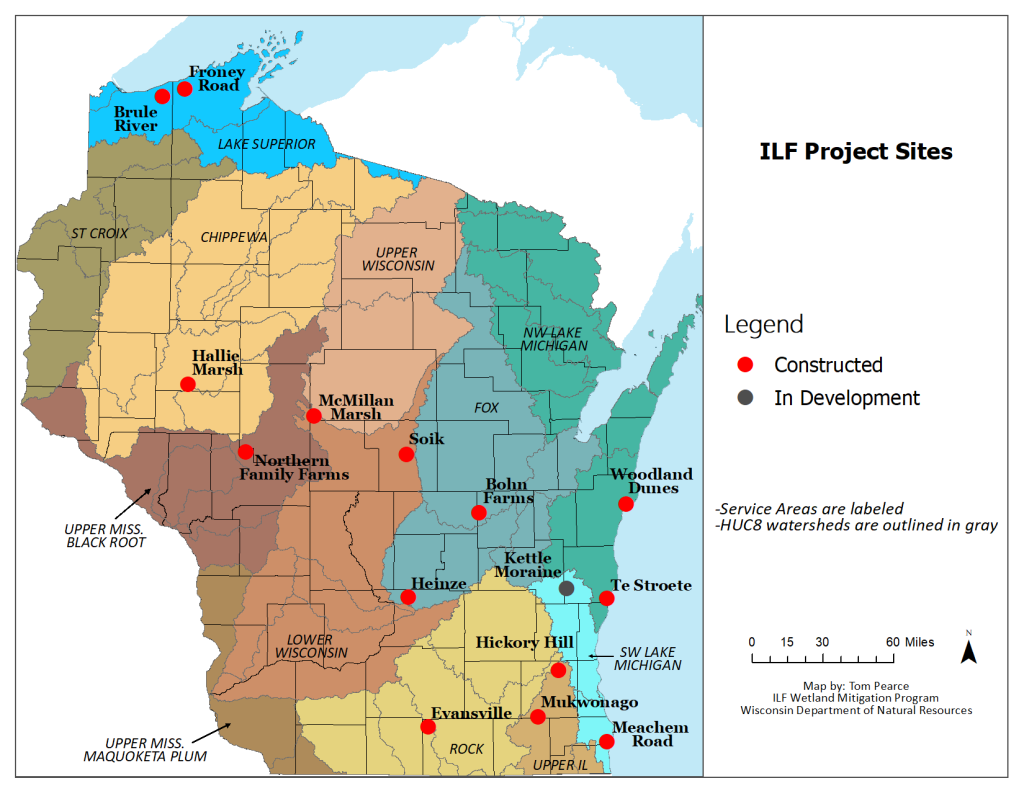Wisconsin Wetland Permitting Dashboard
This dashboard summarizes impacts, restoration projects, and mitigation activities that have been permitted through the DNR Wetland Program. Initiated by the Wetland Study Council in 2020, this dashboard does not include wetland impacts or restoration acres that are not permitted by DNR, such as agricultural projects.
Permitted and Exempt Impacts
From 2022-2024, permanent impacts ranged from 120-180 acres, and temporary impacts ranged from 100-220 acres.
DNR authorizes wetland impacts through general permits and individual permits. Projects that meet the artificial exemption or the nonfederal exemption do not need a permit. Filling and converting wetlands to uplands are considered permanent impacts. Temporary impacts include excavation and backfilling in a wetland, or plant community conversion.
The artificial wetland exemption applies to a wetland that is the result of human modification to the landscape and which does not show any wetland history prior to August 1991.
The nonfederal wetland exemption applies to wetlands that are determined to be non-jurisdictional by the U.S. Army Corps of Engineers.
Permit Practicable Alternatives Analysis
For general and individual permits, applicants must complete a practicable alternatives analysis to demonstrate that the preferred project alternative:
- Cannot avoid wetland impacts
- Minimizes wetland impacts to the maximum extent practicable while meeting the basic project purpose.
The practicable alternatives analysis typically results in approved development projects that avoid and minimize wetland impacts.
*Note – the practicable alternatives analysis is not applied to wetlands that meet either the artificial or nonfederal exemptions.
| Requested Acres | Authorized Acres | Percent Reduction | |
|---|---|---|---|
| Individual Permit | 67 | 15 | 78% |
| General Permit | 35 | 26 | 26% |
| Requested Acres | Authorized Acres | Percent Reduction | |
|---|---|---|---|
| Individual Permit | 55 | 37 | 33% |
| General Permit | 18 | 15 | 17% |
| Requested Acres | Authorized Acres | Percent Reduction | |
|---|---|---|---|
| Individual Permit | 42 | 34 | 20% |
| General Permit | 21 | 19 | 7% |
Net Gain/Loss 2022-2024
Restoration & Mitigation 2022-2024
Permanent Impacts 2022-2024
Statewide Summary 2022-24 (Acres)
- Net Gain/Loss, +4,779
- Restoration + Mitigation, +5,256 Acres
- Permitted Restoration, +4,149
- Mitigation Projects, +1,107
- Permanent Fill, -476
- Artificial Exemption, -241
- Nonfederal Exemption, -84
- General Permit and Individual Permit, -146
- Restoration + Mitigation, +5,256 Acres
The net gain/loss map for 2022-2024 shows the difference between DNR permitted permanent wetland impacts and DNR permitted restoration projects and constructed mitigation sites in acres for each county. Statewide, restored acres are greater than permanent impacts, but some counties saw a net loss of wetland acreage.
Permanent fill includes impacts resulting from projects that were permitted through general or individual permits and projects that met the artificial or nonfederal exemption criteria. Wetland impacts vary across the state and are generally higher in urban/suburban settings that experience a greater degree of development.
Restoration acres include both restoration projects that were permitted through a DNR wetland conservation general permit and wetland mitigation sites, including private mitigation banks and the DNR In-Lieu Fee Program. For projects included here, wetland hydrology has been restored or improved through common practices such as breaking agricultural drain tile or filling drainage ditches, or farmed wetlands being returned to their natural, vegetated state.
By 1990, Wisconsin had lost an estimated 46% of ten million wetland acres (Dahl, 1990). Today, statewide wetland acreage is estimated at 6 million acres according to the Wisconsin Wetland Inventory. This increase is the result of improved wetland mapping data and methods and wetland protection and restoration.
Wetland Restoration
Wetland restoration activities include disabling drain tile, filling drainage ditches, or returning farmed wetlands to their natural, vegetated state. These activities reestablish or rehabilitate wetland hydrology.
Wetland enhancement activities include vegetation management to promote native species and shallow scrapes to eradicate invasive vegetation and improve wildlife habitat in wetlands where wetland hydrology is intact.
These acres include wetlands restored through DNR authorized restoration projects implemented by private landowners; government agencies including the U.S. Fish and Wildlife Service, the Natural Resources Conservation Service, and county land and water conservation departments; and conservation groups such as Ducks Unlimited and the Wisconsin Waterfowl Association. These do not include wetland mitigation projects.
Wetland Compensatory Mitigation
Wetland mitigation activities have accounted for over 620 acres of wetland restoration from 2022-2024. Mitigation project sites are spread throughout the state in 11 different Service Areas.
A wetland mitigation bank is a private wetland restoration project, operated by a sponsor who may sell credits to permittees or exempt project proponents to offset impacts associated with individual permits and some nonfederal exemptions.
The Wisconsin Wetland Conservation Trust, DNR's In Lieu Fee (ILF) mitigation program, offers an alternative credit purchase option to offset impacts if mitigation bank credits are not available in the same Service Area.
Wetland mitigation is required for all wetland individual permits and for projects that meet the nonfederal exemption that impact more than 10,000 square feet of wetlands in urban areas, or more than 1 acre of wetlands in rural areas.

